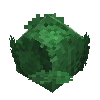Temperature: Difference between revisions
(Rewrote Enclosed Room for better flow, better explanation, included room debug command) |
|||
| Line 49: | Line 49: | ||
==Effect on Animals== <!--T:10--> | ==Effect on Animals== <!--T:10--> | ||
Wild animals and unfed domesticated animals will | Wild animals and unfed domesticated animals will lose weight over the colder months, resulting in less meat and less or no fat dropped on kill. | ||
<!--T:13--> | <!--T:13--> | ||
Revision as of 15:23, 2 May 2023
Outside temperature can influence the players body temperature, as well as plant growth and animal weight.
Body Temperature
A seraphs body temperature needs to be kept at 37°C or more, otherwise they will suffer from cold and might even end up freezing to death.
With harsh winters enabled, the player will start taking damage if they are at least 4 degrees too cold for more than 3 ingame hours straight. The damage will tick every 10 seconds.
Body temperature can be maintained using various means, or can be disabled completely when creating a world, or with the following world config command:
/worldconfig bodyTemperatureResistance -40
Warm Clothes
Players can wear warm clothes to combat the cold. Make sure to pick woollen or fur lined clothes when going out in colder temperatures, and keep your clothing always repaired with linen stitches or twine.
Enclosed Rooms
Staying in enclosed rooms will benefit the player, as their body temperature will be raised by 1°C as long as they stay inside. Room calculation is quite generous in version 1.18.0, and enclosed rooms can be far larger than a cellar or greenhouse. The warming range of firepits will be larger indoors then outside (since version v1.14.8-rc.1) - effectively enabling the player to warm up a room if there is a burning firepit in it.
A room is considered completely enclosed if there are no openings and less than 50% sunlight inside. This means an enclosed room must fulfill the following criteria:
- The room cannot have any entrances aside from a door or trapdoor (rough doors do not count)
- The room needs to be completely closed off by solid block faces. All the walls need to be complete, without any holes created by slabs or stairs - however, if the full faces of slabs or stairs are located to the inside of the room, they will count
- Chiseled blocks count as valid blocks for rooms, with the following limitations: The inward facing side must be almost solid (less than 20 voxels missing), and at least 50% of the blocks volume must be retained
- Glass blocks in the walls count as enclosing elements; however, since they let in light, they cannot make up too much of the roof for an enclosed room
- Slanted roof blocks do not count towards an enclosed room and will need full blocks below them to fill the space
- The room can be a maximum size of 14x14x14. Specifically, any point of the room cannot be more than 14 blocks (counting inclusively) away from the room's walls. Diagonals for this calculation count as 2 blocks long.
Players can use the console command /roomregdebug hi and /roomregdebug unhi to highlight valid rooms. This is useful when trying to figure out whether or not a given space is considered a valid room.
Heating
Different blocks and mechanics can help heat up the players surroundings.
A torch held in the off hand or the active slot will raise the temperature slightly. Standing beside a lit firepit, forge or bloomery will warm the player up and raise their body temperature for a time even after stepping away from the heat source. Burning wood or coal piles will have the same effect.
Note that only the firepit will be able to "heat up a room", as the firepit's warming range will be larger while in an enclosed room - other heat sources, or an open air firepit, will only heat up the area in very close proximity to them.
Plant Growth
Mushrooms will loose their harvestable tops when it is too cold, remaining only as the stumps. Similarly, berry bushes will only flower and bear fruit when it is warm enough.
Cultivable crops like grain and vegetables have their tolerated temperatures noted on the seed tool tip. All crops will stop growing at 0°C, however some hardy crops can suffer lower temperatures without getting frostbite. If a crop suffers from frostbite, they will only yield half of their possible harvest, even if the temperatures go up again. They will however always drop their seed.
Similarly, if a crop gets too hot while not yet ripe, they could suffer from heat damage, which will also half the harvest. An already ripe crop will not be affected by this.
Effect on Animals
Wild animals and unfed domesticated animals will lose weight over the colder months, resulting in less meat and less or no fat dropped on kill.
Bees will hibernate at freezing temperatures. See Beekeeping for specifics.
Video Tutorials
| Detailed look at body temperature |
|---|
| Wiki Navigation | |
|---|---|
| Vintage Story | Guides • Frequently Asked Questions • Soundtrack • Versions • Controls |
| Game systems | Crafting • Knapping • Clay forming • Smithing • Cooking • Temperature • Hunger • Mining • Temporal stability • Mechanical power • Trading • Farming • Animal husbandry |
| World | World generation • Biomes • Weather • Temporal storms |
| Items | Tools • Weapons • Armor • Clothing • Bags • Materials • Food |
| Blocks | Terrain • Plants • Decorative • Lighting • Functional • Ore |
| Entities | Hostile entities • Animals • NPCs • Players |
| Miscellaneous | List of client commands • List of server commands • Creative Starter Guide • Bot System • WorldEdit • Cinematic Camera • Adjustable FPS Video Recording • ServerBlockTicking |
